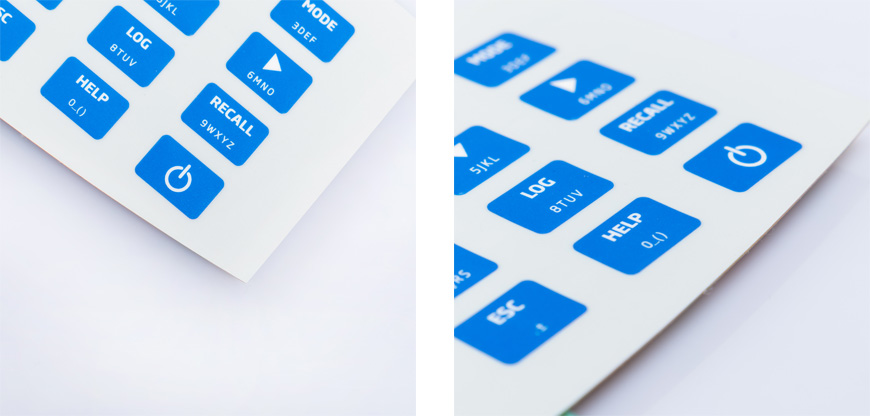
In the fast-paced world of modern electronics, where sleek design and user-friendly interfaces are paramount, the importance of the humble membrane switch spacer cannot be overstated. These small, unassuming components play a critical role in ensuring the functionality and durability of electronic devices we use every day. In this article, we will delve deep into the world of membrane switch spacers, exploring their significance, types, applications, and the role they play in enhancing user experiences.

Before we dive into the specifics of membrane switch spacers, let's first understand what a membrane switch is. A membrane switch is a low-profile, flexible, and often customizable interface that is commonly used in various electronic devices, such as microwave ovens, remote controls, and medical equipment. It consists of multiple layers of flexible materials, including graphic overlays and circuitry, which are pressure-sensitive and provide tactile feedback when pressed.
Membrane switch spacers, also known as domes, are an integral part of the membrane switch assembly. These tiny components are typically made of materials like polyester or polyimide and are strategically placed between the layers of the membrane switch. Their primary purpose is to create the necessary gap or separation between the upper and lower circuit layers.
There are several types of membrane switch spacers available, each with its unique properties and advantages. The choice of spacer type depends on the specific requirements of the electronic device and the desired user experience. Here are some common types:
1. Tactile Membrane Switch Spacers
Tactile spacers are designed to provide users with a distinct tactile feedback when a button is pressed. This feedback helps users confirm that their input has been registered, making it a popular choice for applications like keyboards and remote controls.
2. Non-Tactile Membrane Switch Spacers
Non-tactile spacers, on the other hand, do not provide the same tactile feedback but are preferred for applications where a quieter operation is essential, such as in medical devices or sound-sensitive environments.
3. Metal Dome Membrane Switch Spacers
Metal dome spacers are known for their durability and longevity. They are often used in applications where the membrane switch must withstand frequent and rigorous use, like in industrial control panels.
4. Poly Dome Membrane Switch Spacers
Poly dome spacers are cost-effective and commonly used in consumer electronics, offering a balance between tactile feedback and affordability.
The versatility of membrane switch spacers makes them suitable for a wide range of applications. Some notable uses include:
1. Consumer Electronics
Membrane switch spacers are extensively used in smartphones, tablets, and remote controls, where user-friendly interfaces and durability are essential.
2. Medical Devices
In the medical field, membrane switches with spacers find applications in devices like infusion pumps and diagnostic equipment, ensuring precise input and ease of use.
3. Industrial Control Panels
Industrial environments demand robust and reliable components. Metal dome spacers are often employed in control panels for their longevity and resistance to harsh conditions.
4. Automotive Interfaces
In modern vehicles, membrane switch spacers are used in dashboard controls and infotainment systems, providing a seamless and responsive user interface.
Membrane switch spacers may be small in size, but their impact on the performance and user experience of electronic devices is significant. These versatile components offer a wide range of benefits, from tactile feedback to durability, making them indispensable in today's electronics industry.
If you're looking to enhance your product's user interface and functionality, consider the role that membrane switch spacers can play. Their ability to improve the overall user experience should not be underestimated.
What is a membrane switch spacer?
A membrane switch spacer, also known as a dome, is a small component placed between the layers of a membrane switch to create separation and provide tactile feedback.
What are the different types of membrane switch spacers?
There are various types of membrane switch spacers, including tactile, non-tactile, metal dome, and poly dome spacers, each with unique properties.
Where are membrane switch spacers commonly used?
Membrane switch spacers find applications in a wide range of devices, including consumer electronics, medical devices, industrial control panels, and automotive interfaces.
Why are tactile membrane switch spacers preferred in some applications?
Tactile spacers provide users with tactile feedback when a button is pressed, confirming input registration, which is essential in applications like keyboards and remote controls.
Are membrane switch spacers essential for electronic devices?
Yes, membrane switch spacers play a crucial role in ensuring the functionality and durability of electronic devices, enhancing the user experience.